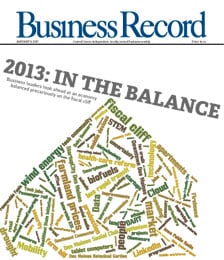FedEx, UPS play by different rules

.floatimg-left-hort { float:left; } .floatimg-left-caption-hort { float:left; margin-bottom:10px; width:300px; margin-right:10px; clear:left;} .floatimg-left-vert { float:left; margin-top:10px; margin-right:15px; width:200px;} .floatimg-left-caption-vert { float:left; margin-right:10px; margin-bottom:10px; font-size: 12px; width:200px;} .floatimg-right-hort { float:right; margin-top:10px; margin-left:10px; margin-bottom:10px; width: 300px;} .floatimg-right-caption-hort { float:left; margin-right:10px; margin-bottom:10px; width: 300px; font-size: 12px; } .floatimg-right-vert { float:right; margin-top:10px; margin-left:10px; margin-bottom:10px; width: 200px;} .floatimg-right-caption-vert { float:left; margin-right:10px; margin-bottom:10px; width: 200px; font-size: 12px; } .floatimgright-sidebar { float:right; margin-top:10px; margin-left:10px; margin-bottom:10px; width: 200px; border-top-style: double; border-top-color: black; border-bottom-style: double; border-bottom-color: black;} .floatimgright-sidebar p { line-height: 115%; text-indent: 10px; } .floatimgright-sidebar h4 { font-variant:small-caps; } .pullquote { float:right; margin-top:10px; margin-left:10px; margin-bottom:10px; width: 150px; background: url(http://www.dmbusinessdaily.com/DAILY/editorial/extras/closequote.gif) no-repeat bottom right !important ; line-height: 150%; font-size: 125%; border-top: 1px solid; border-bottom: 1px solid;} .floatvidleft { float:left; margin-bottom:10px; width:325px; margin-right:10px; clear:left;} .floatvidright { float:right; margin-bottom:10px; width:325px; margin-right:10px; clear:left;} Dear Mr. Berko:
I own 665 shares of FedEx Corp., which my broker wants me to sell because he believes that Congress is going to require the company to conduct its business according to the National Labor Relations Act, requiring all employees to become members of the Teamsters union, which will “cripple profits and revenues.” I don’t understand this, because United Parcel Service employees are Teamsters, and the company seems to be doing very well. But my broker insists that if Federal Express is subject to the National Labor Relations Act rules, its shares could fall by 50 percent, because those rules are “anti-business.” I thought both companies were regulated by the same labor laws. He also advises my investment club, which owns 171 shares of FedEx, to sell. Can you please explain this more clearly for me and my club’s 32 members? We look forward to your answer.
S.T., Troy, Mich.
Dear S.T.:
OK. If you folks can get the following in your head, you will have it in a nutshell.
In 1926, Congress passed the Railway Labor Act (RLA), the purpose of which was to keep the economy flowing without the disruption of volatile railway labor disputes. In 1934, the National Mediation Board was incorporated under the RLA to provide effective resolution between labor and management. And in 1936, the airline industry was brought under the RLA because of its prominence in interstate and foreign commerce.
FedEx (FDX-$75.72) is regulated by the RLA, which is fitting because it delivers 85 percent of its packages by air, most of those deliveries are time-sensitive, and on-time delivery is vital to the economy. The RLA recognizes the right of employees to join a union but requires unions to organize at the national level rather than locally. Still, in the past 22 years, FDX employees have rejected every organizational attempt by the Teamsters union, whose leadership I wouldn’t trust to organize a two-car funeral.
United Parcel Service Inc. (UPS-$60.30), founded in 1907, delivers 85 percent of its packages by truck and is regulated by the union-friendly National Labor Relations Act. The NLR Act, passed by Congress in 1935, does not contain provisions for mandatory mediation and allows the Teamsters to organize at the local level. UPS employs 245,000 Teamsters, whose walkouts have wreaked havoc on the company’s business model. The Teamsters have cost UPS dearly, most notably a crippling strike in 1997. FDX, of course, was delighted by a temporary surge in new business. And two years ago, UPS had to cough up $6.1 billion to cover the Teamsters’ mismanaged, overgenerous pension liabilities. This payment, plus future guarantees of poorly managed Teamsters pensions, caused a downgrade in the UPS credit rating.
In 1995, UPS attempted to reclassify under the RLA to give its business model and client base more stability and predictability. But every time UPS and federal regulators took up the issue, the Teamsters’ multimillion-dollar slush fund and sleazy lobbyists tanked the talks. UPS realizes that it can’t fight the Teamsters, so it wants to burden FDX with the same sleaze, requiring FDX employees to work under NLR rules and permitting the Teamsters to organize on the local level.
UPS has more than 400,000 employees, most of whom are Teamsters. FDX has 250,000 employees, none of whom are union members except for its 4,500 pilots, who belong to the Air Line Pilots Association. A Teamsters takeover could hurt FDX, which has no experience with rough-and-tumble union leaders. However, UPS, even with a Teamsters imprimatur, seems to be a significantly better-run company. UPS’s net profit margins, return on assets and return on equity — all key measurements of management skills — are far superior to those of FDX. So maybe your broker is right.
Please address your financial questions to Malcolm Berko, P.O. Box 8303, Largo, Fla. 33775 or e-mail him at mjberko@yahoo.com. © 2010 Creators.Com






